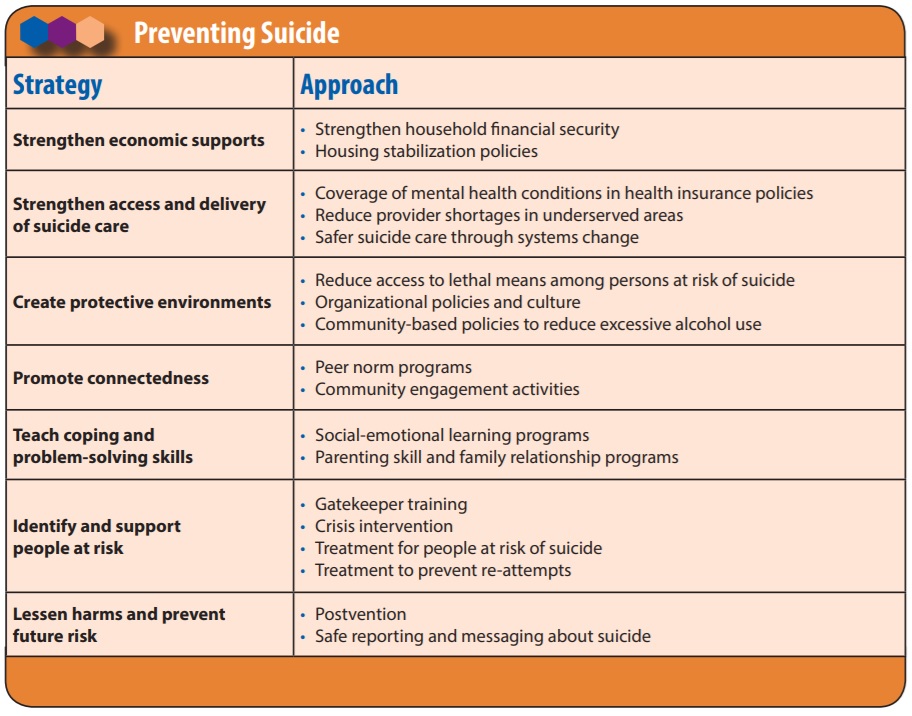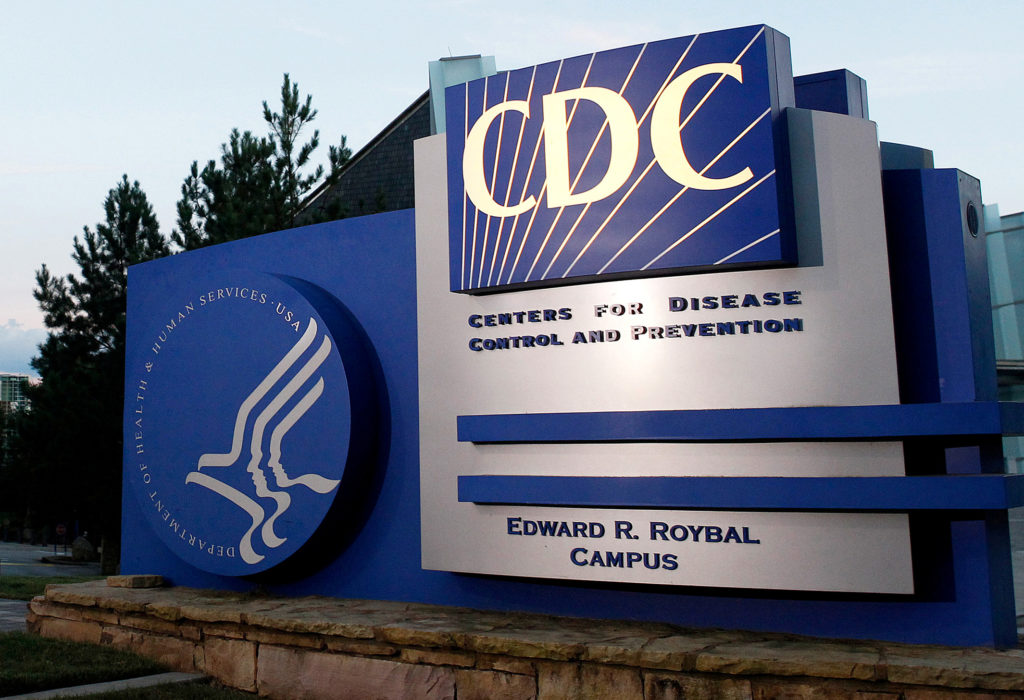Among teenagers in the U.S., suicide is the second leading cause of death. Earlier this month, the CDC released a report showing a 56 percent increase in suicides among those aged 10 to 24 between 2007 and 2017.
But the wide range of factors that increase the risk of suicide make pinning down a single cause or solution difficult.
Preventing Suicide
Though the CDC report focuses on suicide among children and young adults, other data from the CDC indicates suicide is on the rise among every other age group as well.
“Research has shown that there are multiple intersecting factors that contribute to suicide and this is one of the things that we really try to emphasize is that suicide is complex and there are a number of different factors,” CDC Behavior Scientist Asha Ivey-Stephenson told The Globe Post.
“So one of the things that we do is … we put together strategies based on the best available evidence with what is shown to work to prevent suicide.”
The CDC currently recommends seven strategies for suicide prevention, which are outlined in the graphic below and range from actions at an individual level to public policy at every level of government.


13 years ago, Desiree Woodland lost her 24-year-old son to suicide. Nine months prior to his death, Woodland’s son had been diagnosed with schizophrenia but she thought he was getting treatment and improving. That was tragically not the case.
“I taught sixth-grade social studies and did a wonderful lesson with my kids and came back home and I found my son,” Woodland told The Globe Post. “He left lots of notebooks and journals of his feelings and ways he was going to take his life. I mean. … this was such a shock to me.”
Mental illness and suicide are often misunderstood and stigmatized. In the years since her son’s death, Woodland founded a non-profit, Breaking the Silence, which holds events at schools in New Mexico to teach students about how to talk about mental illness and suicide and show them that being mentally ill or having suicidal thoughts is not something to hide or be ashamed of.
“You have to do something with your pain,” Woodland said. “I felt like the most proactive thing that we could do is to go into schools and teach middle school and high school students about mental illness and give them the language to talk about their feelings about depression and anxiety.”
‘Deaths of Despair’
Economic pressures on families in poverty-stricken communities play a notable role in higher suicide rates. A new study from the American Academy of Pediatrics found children living in U.S. counties with the highest poverty rates are nearly 40 percent more likely to die from suicide.
“The idea of ‘deaths of despair’ seems to capture some of that,” Forensic and Clinical Psychologist Aaron Kivisto told The Globe Post.
“Kids and adults growing up in these communities where some are being ravaged by substance abuse problems, plenty are being hit with economic issues that are impacting families, and certainly when the despair goes up like that, we’re seeing suicides increase really across all age groups.”
The CDC acknowledges economic strain can increase the risk of suicide and includes strengthening economic supports among one the seven strategies they suggest to prevent suicide.
“Economic and financial strains such as job loss, unemployment, and reduced income are things that may increase the risk of suicide,” Ivey-Stephenson said, adding that state assistance programs to reduce financial insecurity can be an effective means of limiting suicide risks.
Firearms Access
The mentally ill are often a scapegoat for mass shootings like those in El Paso, Texas and Dayton, Ohio from earlier this year. While mass shootings frequently dominate headlines, the majority of gun-related deaths come not from homicide or episodes of mass violence, but suicide.
Both Presidents Donald Trump and Barrack Obama have attributed mass shootings in part to mental illness, even though research indicates the link between serious mental illness and violence against others is weak.
There is, however, a strong correlation between mental illness and rates of suicide, according to a Psychiatric Services study that found people with a serious mental illness are 20 times more likely to commit suicide compared to the general population.
According to one study by Mathew Miller published in the American Journal of Epidemiology, even though firearms account for only 5 percent of all deliberate self-harm episodes, half of the roughly 100 suicides in the U.S. each day are attributable to firearms.
Of suicide attempts using firearms, 90 percent are fatal, making firearms by far the most lethal means of suicide.
“Accessibility to firearms is always going to be one of those top priority issues in terms of understanding what’s happening and particularly how some of these kids getting their hands on firearms to do these sorts of things,” Kivisto said.
“What we know from a lot of data that’s come before is that the completion rate of suicides using firearms is exponentially higher than suicide attempts with other means.”
A meta-analysis of several studies and articles found access to firearms is associated with risk for suicides. Some states, like Indiana, have been successful in reducing the number of suicides by reducing access to firearms.
Indiana which has had a “red flag” law on the books since 2005 has significantly reduced suicide rates according to a study that found a 7.5 percent reduction in firearm suicides in the 10 years following the enactment of the law.
Red flag laws allow courts to issue a special protection order which police can use to temporarily confiscate firearms from individuals a judge considers to be an immediate danger to themselves or others.
“The most prominent policy solution at this point in time tends to be what are informally known as red flag laws or these risk-based gun seizure laws,” Kivisto said. “
They fill a number of gaps in addressing suicide. Oftentimes they come to be as a result of concerns about mass homicide. In practice, we know … that a large majority of the seizures are occurring actually because somebody is perceived to be at risk for suicide.”
Another study found even something as simple as keeping guns safely stored, unloaded, and with locking devices, could prevent as much as one-third of all firearm suicides and accidental firearm deaths. Currently, only a few states have laws requiring gun owners to store their firearms in such a manner.
While firearms are the most deadly means of suicide and one of the CDC’s recommendations is to reduce access to lethal means of suicide, Ivey-Stephenson emphasized firearms are only a part of that picture and said medications and other products also fall under that classification.
If you or someone you know are struggling with mental illness, consider calling the National Suicide Prevention Lifeline at 1-800-273-8255


